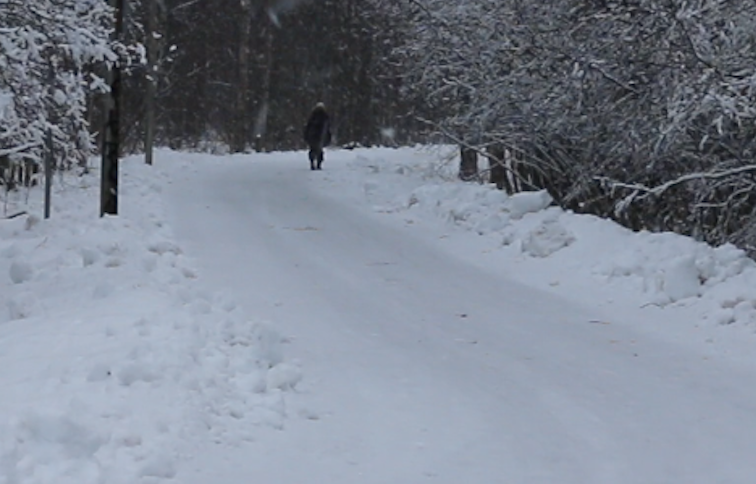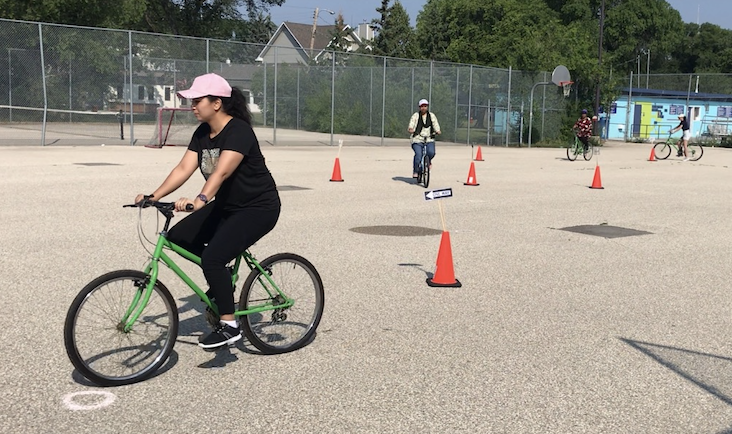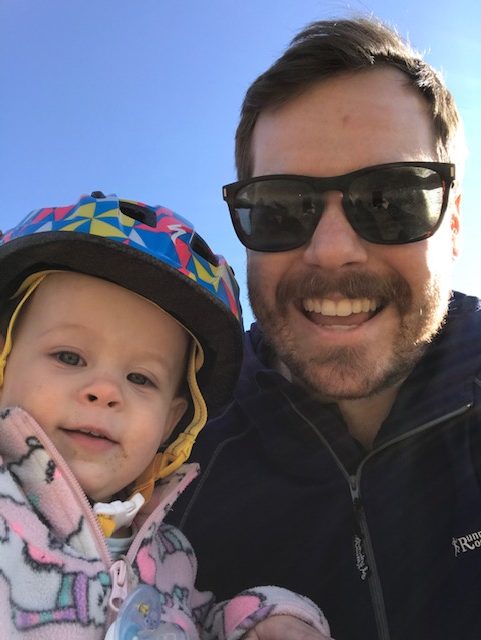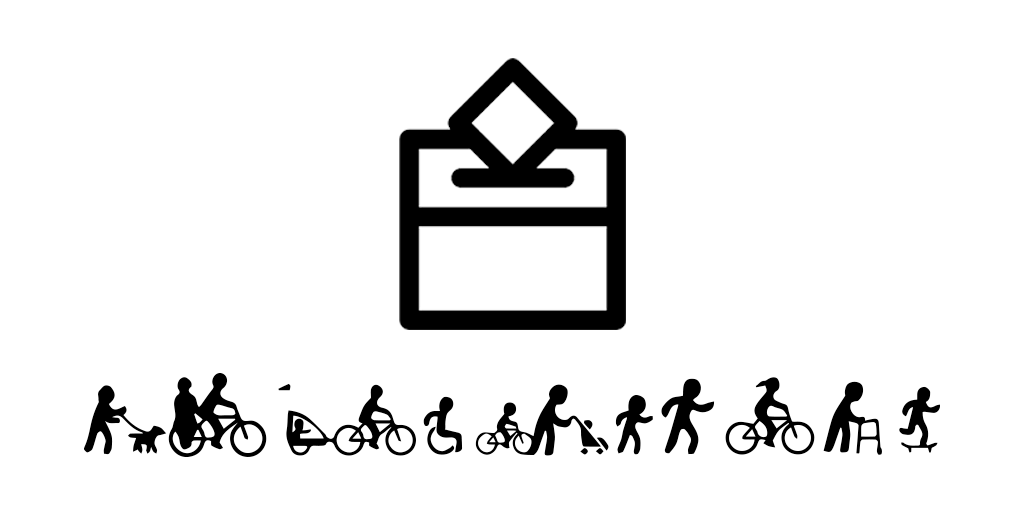**Official Info for Manitobans: visit Shared Health for COVID-19 for updates. Recommendations and restrictions are changing rapidly.**
During a pandemic, what’s the safest way to get to the grocery store if I need to? If I am staying home for two weeks, can I take my kids outside to burn off some steam at the park? Can I still ride my bike?
In a matter of days, questions like this have suddenly become very important to a lot of people. They are questions we aren’t used to asking.
Amidst a growing number of positive coronavirus infections in Ottawa, the city’s Medical Officer of Health recently issued a warning everyone to strengthen social distancing measures and avoid “non-essential” travel by staying home. At the same time, she noted that people could still go outside:
People can still go outside and walk your dog. It means you can play in the park, take your children out. But as you’re doing those things to make sure you’re keeping distance from others.”
Dr.Vera Etches, Medical Officer of Health, City of Ottawa
A recent open letter to the UK government, signed by a long and growing list of public health & transport researchers also addressed the issue of access to physical activity and the outdoors during the pandemic. It shines a light on what is fast emerging as an important and looming question in public health and transportation:
Open letter from public health & transport researchers calls on government to support safe walking & cycling (in terms of infection & injury risks) during the COVID-19 pandemic: https://t.co/aybJ8tYrF1
— Rachel Aldred (@RachelAldred) March 17, 2020
In this period of unparalleled uncertainty and global cooperation, Winnipeg Trails has been closely monitoring the advice of public health professionals and other relevant authorities in Winnipeg, across Canada and in harder hit areas around the globe* it pertains to being outside.
For us, it’s because people want to know if/when/where they can use trails. If they are being told to stay home except for essentials, people want to know whether they should get to the grocery store by bus or by car or by bike.
People also want to know what to do with rambunctious kids who are home from school. They see trails as a natural, neutral and healthy play space with recreation centres and pools closed, and the simplest options become the best ones. Parks, pathways, green spaces, forests too. All suddenly even more critical than usual.
Winnipeg Trails is entering this discussion out of necessity and also because of who we are.
Public health is a multi-disciplinary field at its core. Public health is where epidemiology, medicine and the average person meet. It takes health professionals, behavioural scientists, psychologists, data analysts, communicators, software programmers and politicians to develop and coordinate/disseminate a response.
Winnipeg Trails is by no means a centre for epidemiological research nor are we a crisis response team. Nor are we a government body. Our expertise lies in developing best practices on public policy in transport and we specialize in the communication of forward-thinking ideas and collective action.
We are taking the step of offering our analysis here because people are struggling to get clear information in an area that we work in every day. After careful consideration, we have decided that we have a contribution to make to our collective physical and mental health during this global call for social isolation. We’d like to share what we know about physical activity as a public health measure based on what the experts are saying and offer important transportation option information valuable during a pandemic.
There aren’t always perfect answers and we need to collaborate. We’ve sent this analysis along to some of our friends working in more medical/academic sectors of public health for their input too. They are a little bit busy right now, but if/when they share edits, we’ll incorporate them as we deem necessary.
Two things are clear and most important:
1. Stay home, if you can.
For now. No one can underscore this enough. No succinct message can say it all in a few words, but if society was to convey one thing right now, it would be this: stay home. That’s why, in the absence of clarifying information on the wisdom of physical activity outdoors our first public message on this topic was about staying home. For an organization designed to encourage people to go outside, you can imagine how difficult that is.
How long? No one is quite sure but for now, this first phase of social distancing/isolation will last at least two weeks. We’ve all seen some measures – like country-wide border, restaurant or airline closures – lasting a month, even more. As most know, the initial response is intended to cover the presumed incubation period of the virus and/or the time necessary for healthcare systems to prepare. The world needs to catch a break. This is why travellers returning to Canada are being asked to self-isolate for two weeks, or why anyone experiencing even mild symptoms of a cold, fever or flu should take necessary precautions. There is also plenty to indicate that transmission can happen without symptoms, so the exhortation to self-isolate and/or to keep social distance extends to anyone in close contact with family experiencing symptoms or someone who may have. If you think about it, that means pretty much everybody. The key is to slow the transmission, so when in doubt, see #1.
This is especially important for the remaining people fulfilling key civic duties. Some people don’t have the luxury of staying home, such as healthcare workers, essential service providers, transit drivers, grocery store clerks, etc… So do it for them.
We need to prepare for the possibility that this could last longer too. So we all need to think about our longterm personal health now.
Don’t forget the other personal precautions:
- Limit physical contact – custom greetings – no hand shaking or hugs
- Wash hands regularly
- Cough or sneeze into sleeve/elbow
- Self monitor and self isolate for 14 days
And always check for the latest updates.
2. Yes, you can go outside, for essential reasons, if you can maintain social distancing.
Social distancing means 2-3 meters (6′-9′) of space, according to the experts. Note that many of Winnipeg’s asphalted multi-use trails are 3.5m wide, giving you just enough space to do that. However not all of them are that wide and winter maintenance can be spotty. Use your judgement.
Help PREVENT the spread of #COVID19. Stay calm. Be informed. Visit http://Canada.ca/coronavirus for trusted information. #FlattenTheCurve #coronavirus
Posted by Canadian Public Health Association on Monday, March 16, 2020
3. There are multiple “essential” reasons for going outside, and one of them includes getting exercise.
Everyone knows the main reasons: food, medicine, etc. Other “essential reasons” include some things you may not have thought of, like donating blood. (Right now the number of people donating blood is dropping, but demand for donated blood is the same. Consider dropping by the blood bank after a grocery trip.)
How long should I spend outside? Authorities are still asking people to limit their exposure to others when they can, so we’ve seen a half hour of exercise as being recommended. Like all of the above though, check for guidance from your public health authority anything can change. Meanwhile, remember that getting outside is good for reducing stress and nature offers untold learning opportunities for young children who are out of school.
4. Healthy lungs and bodies are very important, especially now.
They are always important, of course, but doubly so in times like this. A healthy respiratory system helps stave off the worst effects of all kinds of illnesses, including this one. A lifestyle filled with light to vigourous physical activity helps many of us avoid chronic diseases that would put us in the high risk category, and importantly, helps those with chronic diseases already manage and mitigate the symptoms they have. “Exercise is the best medicine” is far more than a saying.
5. Not all transportation modes are created equal.
Some modes of transportation have knock-on effects not just on our own bodies, but also on the bodies of other people and their environment. Some modes, like automobile travel, are known to be dangerous, on a scale that dwarves the current stated of the pandemic we are attempting to solve. At the same time, organizations like the CDC are recommending independent mobility over options where people are forced to congregate. So, people must weigh their options based on what they have access to based on what they have and their community offers.
5. Cycle or walk there, if you can.
If more people walk or cycle** it puts less pressure on the transit system and can put others at the less risk. Both cycling and walking make you, as a person, healthier (so long as you remember the need to keep your distance in this pandemic, of course). In Canada*** the consensus seems to be to encourage people to be outside and active for recreation and transportation so long as distance is maintained. Physical activity is important and health professionals consider walking and cycling as desirable ways to get there when you need to, and this can include getting fresh air and exercise.
6. Don’t drive. Not if you can avoid it.
Public health officials will rarely recommend driving for any reason. On average, more people are killed every 2 days worldwide in traffic collisions than all of the deaths caused by COVID-19 in the 3 months since it began. Driving is the number one preventable cause of death for people aged 10-24. Sometimes, avoiding driving is easier said than done and a pandemic requires taking immediate action and people should do what they need to do. You may not have a bike, for example. You may feel that you live too far to be able to carry groceries on a walk home. In Winnipeg, driving may be the only option. A pandemic does however highlight that, after decades of planning that has spread out our neighbourhoods out and left us with a lack of infrastructure, people may simply feel unsafe to use anything but a car, so we may want to talk about a better way for everyone.
7. If you do drive, please remember to drive slowly and safely.
Take extra care. One of the ironic consequences of empty streets is that people tend to drive faster when they see an open road. Remember speed has consequences for you, and others. Ironically, the wide empty streets and relatively narrow sidewalks that characterize a car-focused transportation planning may mean that people may have little choice but fan out onto the road while walking to allow for 6′ of social isolation when passing others. Be watchful.
8. If you do drive (or if you own a cargo bike), consider asking neighbours who are less mobile than you if there is anything they need.
In times like this, an extra bag of groceries for an elderly neighbour may be greatly appreciated, but remember to wash your hands and clean everything before handing anything over.
9. Leave room on public transit for others.
It pains us to say this because transit is our great ally but if you don’t need the bus, and can walk or bike instead, do it. For the next little while, if you do need to take public transit and have a flexible schedule, try to take it during off-peak hours. Choosing any other mode helps makes space for others who rely on it. While public transit is usually a boon to health equity, overcrowded transit isn’t anyones friend in a pandemic. Make room.
WHAT CAN OUR CITY DO TO MAKE THE HEALTY CHOICE THE EASY CHOICE?
Winnipeg Trails also plays a leadership role in bringing timely and important infrastructure best practices to Winnipeg – and any ideas that will make life better. The world needs solutions now more than ever.
It is becoming clear among the scientific community that in the short term, all actions that increase safety and comfort for walking and cycling will always help in a health emergency.
While we are hesitant to share ideas we have advocated for in the past lest it sound opportunistic, we nonetheless believe even more strongly now that Winnipeg should:
10. Create a temporary, well-maintained city-wide connected bike network
Our air quality matters. Coronavirus is just one example of an illness that is exacerbated by air pollution. We know that there are likely to be quite a few kids home from school and people who are avoiding mass transit for some time. Why not do something easy about individual, independent, healthy mobility to help people cope in this time of crisis?
Many of you will remember Ciclovia in Winnipeg. That always fun event didn’t run last year (it got cancelled, don’t ask why, but it was hugely popular) and it was inspired by a regular Sunday occurrence in Bogota, Columbia. This week, Bogota, inspired by its Ciclovia’s success and needing to reduce pressure on transit and improve air quality for the pandemic crisis decided to add 115km worth of temporary bike lanes to bolster an already impressive existing 550km network of pathways.
Winnipeg Trails is calling for Winnipeg to do the same for practical emergency purposes now and to use this opportunity work on making them permanent.
This is something any city can do now. It costs almost nothing. It provides cleaner air for weakened immune systems. Allows social distancing. Provides free transport for anyone with a bike. You can leave it up indefinitely. Most cities should have done a it long time ago anyway. https://t.co/BRVFZOg55p
— Anders Swanson (@SwansonAnders) March 17, 2020
Like Bogota, Winnipeg’s original Ciclovia was fundamentally easy to setup and ours was installed by a crew working overnight for one evening, instantly creating kms of safe cycling facilities with existing infrastructure. That continued for one Sunday in September for years, each year creating a network of safe protected bikeways stretching from Assiniboine park to the Forks to Kildonan Park and eventually all the way to the perimeter at East St. paul. Plans and maps for its expansion to other neighbourhoods have always existed. (We know, we did some of the mapping.) Even a much larger expansion serving large sections of the city could be implemented by one traffic coning crew in a matter of days.
In this time of crisis, we need to revisit our priorities, for both equity and practicality. We believe it is time to take decisive action and make a city-wide network of wide, safe, bike lanes permanent so we can offer access to critical services the healthy way.
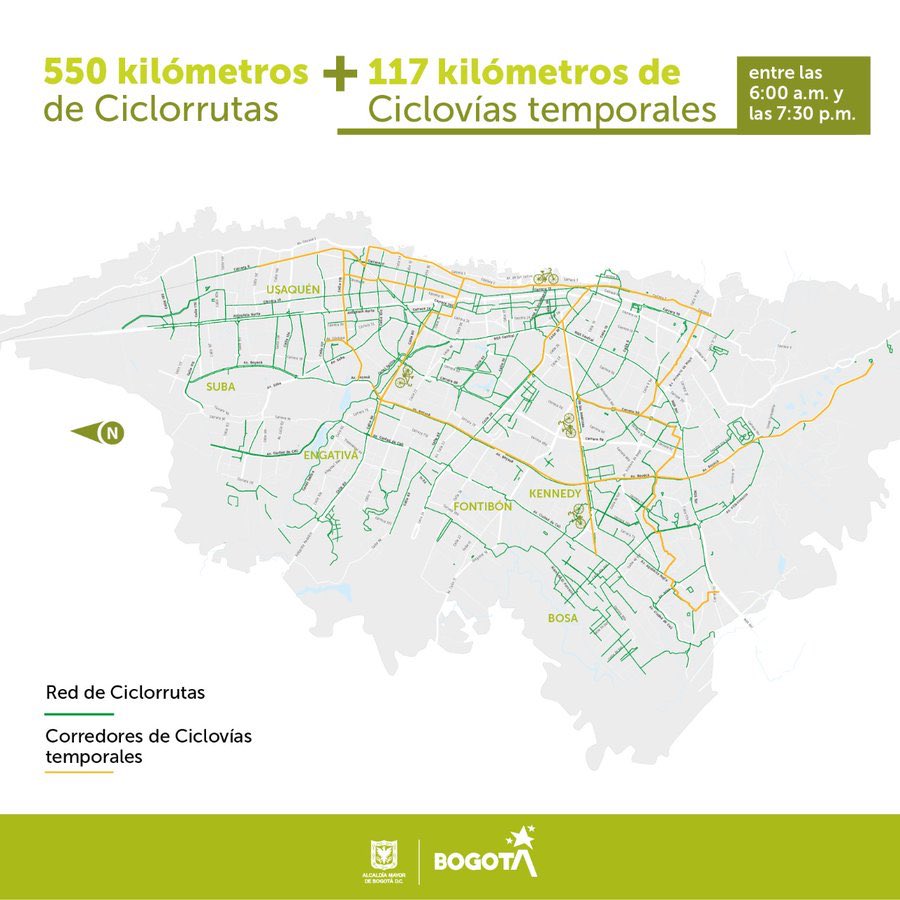
Overall, this as an opportunity to reflect on and build a transportation system that is robust, reliable and caring.
This pandemic is making both people and governments around the world rethink the status quo. We’ve seen, for example, what unparalleled cooperation and collaboration can do when we have to try to solve major problems.
Why not use this as a chance to ensure that public transit is always well-funded, roomy, robust, reliable and ready and able to handle pandemics? Why not regain access to enough space so two people can walk together side by side and be passed by someone in a wheelchair. Why not emulate what some of the best cities in the world are already doing by making it easy to take a bicycle or a stroller on transit at anytime so that we have plenty of room to “social distance” during the next pandemic?
This unwanted behavioural change has nonetheless begun to open windows into another time – a glimpse at some of what we have been missing. We’ve seen, for example, that the travel shutdown hasdelivered much better air quality as less and less people drive:
This in turn, is helping to create healthier lungs and more resiliency to the disease among the people who are trying to fight it.
Unfortunately, it took a crisis to get us here and it is affecting so many sectors that its also causing economic hardship. No one wants or expects economic hardship to accompany positive change. It doesn’t have to. When you past the economic hardships, you can see a glimpse of universally-desirable outcomes and solutions that will help us prevent the next economic crisis.
Let’s not have it be that crisis – whether its environmental, health or business -be required to force us to do better. There are issues equality as big as this one right on our doorstep. Physical inactivity itself is already a global public health epidemic. It surrounds us and causes an unfathomable amount of premature deaths. Even if isn’t time-sensitive like this pandemic response, it doesn’t mean complacency is OK. Importantly, treating things like the inactivity epidemic will help people become stronger and be more able to cope with the next viral pandemic too. And don’t forget climate change. That old thing. Climate change is surely humanity’s biggest challenge and, in terms of risk, it overshadows all of this.
All of these things are clearly connected.
The gaps in our transportation options start to come to the forefront as soon as one of the systems begins to break down. As millions of people temporarily cooped up in their own homes are now realizing, we tend to take the ability to go outside and get physical activity for granted. Not until something so simple gets taken away do we begin to realize just how important some of our underlying transportation structures and gathering spaces are.
Some of us already know full well how important it is that sidewalks are clear of enough snow to push a stroller . . or that being in wheelchair comes with endemic challenges at the best of times. Most Winnipeggers still don’t really know what a truly connected bike path network feels like because Winnipeg doesn’t have one, and those of us who drive everyday have a very different picture of the transportation options that exist for most people, something which only really emerges in an emergency.
We need to put everything we’ve got into transportation systems that are strong enough to help the fight against epidemics, fight climate change and fight inequity. It can be done, it has been done, and it will also help protect the smallest business and the most vulnerable person.
To get there, we need to keep working together and demonstrating caring, just like we are now.
Anders Swanson
Anders is the Executive Director of Winnipeg Trails Association. He is a sustainable transportation policy expert, recognized worldwide for his work on sustainable mobility innovation, data collection techniques, children’s mobility and winter. Along with members of the Winnipeg Trails team, most of whom are now back in Canada, Anders traveled to Finland to speak at the University of Oulu and at the international Winter Cycling Congress in Joensuu. Anders stayed behind to prepare for Plain Bicycle shipment #3, assemble a documentary film about the remarkable number of children who regularly cycle to school in the snow and learn lessons from the Finnish national government as Canada prepares for a new active transportation plan. He became caught up in the wave of border closures and travel advisories that many overseas travellers experienced during the COVID-19 outbreak. Due to being in a household where someone with cold-like symptoms, he found himself unable to travel. He is currently in Oulu, Finland.
IMPORTANT: Anyone experience severe symptoms or in doubt, should always call 911 immediately. For those with mild cold or flu-like symptoms in Manitoba, visit MB Shared Health’s screening tool to learn more about the next steps to take.
*A note on why we are combining guidance at home and abroad. First and foremost, Winnipeg Trails normally defers to the guidance of local public health professionals and relevant authorities nearest home, and like most of you, is watching what he world does too. While we await further input from public health authorities, we are heeding the advice of Dr Michael Ryan, Executive Director, WHO Health Emergencies Programme advice to heart, which is that perfection is the enemy of the good. We need to act early and decisively, and that includes in the sharing of information on social media and here about important.
**Or skateboard, or scooter, or wheelchair. Anything health and active that reduces pollution and is self-reliant which allows you to stay distant from others.

